
Montage of New World Domesticated plants. Clockwise, starting from top left: 1. Maize (Zea mays) 2. Tomato (Solanum lycopersicum) 3. Potato (Solanum tuberosum) 4. Vanilla (Vanilla) 5. Pará rubber tree (Hevea brasiliensis) 6. Cacao (Theobroma cacao) 7. Tobacco (Nicotiana rustica) (Photo credit: Wikipedia)
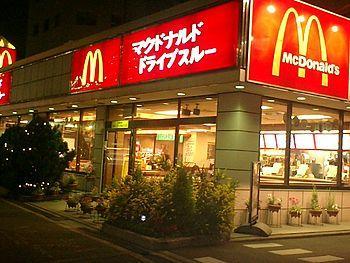
Japanese McDonald’s fast food as evidence of corporate globalization and the integration of the same into different cultures. (Photo credit: Wikipedia)
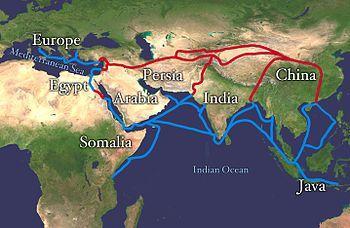
Extent of Silk Route/Silk Road. Red is land route and the blue is the sea/water route. (Photo credit: Wikipedia)
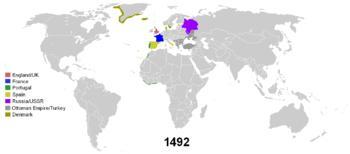
English: Map indicating the territories colonized by the European powers, United States and Japan. (Photo credit: Wikipedia)
What is Globalization?
Globalization is a shift toward a more integrated and interdependent world economy. Globalization has reduced the traditional barriers to cross-border trade and investment (distance, time zones, language, differences in government regulations, culture, and business systems).
The integrated global economy presents new opportunities, in the face of political and economic disruptions. Managing an international business (any firm that engages in international trade or investment) is different from managing a domestic business for a number of reasons: “managers face a greater and more complex range of problems, international companies must work within the limits imposed by governmental intervention and the global trading system, and international transactions require converting funds and being susceptible to exchange rate changes.”
Globalization has two components: the globalization of markets and the globalization of production.
Advances in transportation and telecommunications infrastructure, including the rise of the Internet has propelled globalization.
Here’s my Globalization Pinterest Board. Please review the videos and infographics on this board.
http://www.pinterest.com/socialmediaevie/globalization-overview-ib-week-1/
The Globalization of Markets is the catalyst for International Business.Falling barriers to cross-border trade have made it easier to sell internationally; consumer tastes and preferences are converging. Some companies can offer standardized products worldwide.
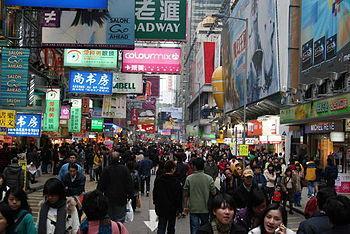
English: Sai Yeung Choi Street South, Mongkok, Hong Kong (Photo credit: Wikipedia)
Information technology and other technological innovations have put global markets within the reach of even small firms in remote locations.
The Globalization of Production
The globalization of production refers to the sourcing of goods and services from locations around the globe to take advantage of national differences in the cost and quality of factors of production including labor, energy, land, and capital. Companies hope to become more competitive by lowering their overall cost structure and/or improve the quality or functionality of their product offering.
The Emergence of Global Institutions
Globalization has created the need for international institutions to help “manage, regulate and police the global marketplace” including: the General Agreement on Tariffs and Trade (GATT), the World Trade Organization (WTO), the International Monetary Fund (IMF), the World Bank, and the United Nations.
A comprehensive overview of GATT is available at
{http://www.ciesin.org/TG/PI/TRADE/gatt.html}.
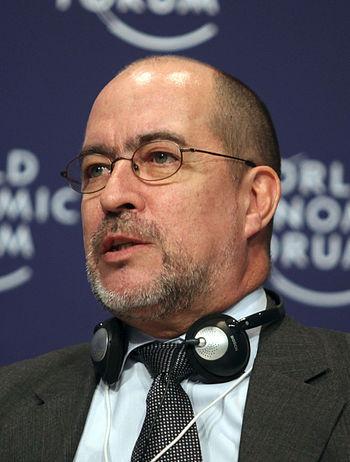
English: DALIAN/CHINA, 12SEPT09 – Alejandro Jara, Deputy Director-General, World Trade Organization (WTO), speaks during the Asia’s New Role in Managing the Global Economy session at The World Economic Forum Annual Meeting of the New Champions in Dalian, China 10-12 September 2009. (Photo credit: Wikipedia)
The World Trade Organization (WTO) is primarily responsible for “policing the world trading system and making sure nation-states adhere to the rules laid down in trade treaties.”
The International Monetary Fund (IMF) was created to maintain order in the international monetary system. The World Bank was set up to promote economic development. The United Nations (UN) was created to preserve peace through international cooperation.
Visit The World Trade Organization web site at {http://www.wto.org/}.
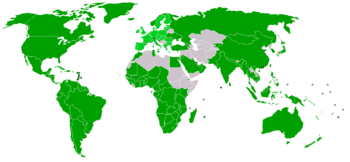
World map of World Trade Organization (WTO) members/non-members, 2005; (Photo credit: Wikipedia)
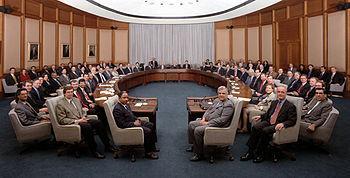
Board of Governors – International Monetary Fund (IMF) (Photo credit: Wikipedia)
The Drivers of Globalization
The two macro factors underlie the trend towards greater globalization: the decline in the barriers to free flow of goods, services, and capital; and technological change in communications, information processing, and transportation technologies.
Declining Trade and Investment Barriers
International trade occurs when a firm exports goods or services to consumers in another country.
Foreign direct investment (FDI) occurs when a firm invests resources in business activities outside its home country.
Globalization and Firms: Watch this video https://www.youtube.com/watch?v=5SnR-e0S6Ic#action=share
The lowering of trade barriers has encouraged the globalization of markets and production. International Managers operate in an increasingly complex and competitive environment.
Watch this video about the Pros and Cons of Globalization
https://www.youtube.com/watch?v=s_iwrt7D5OA
The Changing World Output and World Trade Picture
In the 1960s: the U.S. dominated the world economy and the world trade picture, U.S. multinationals dominated the international business arena with about half the world in the centrally planned economies of the communist world off limits to US multinationals. “The collapse of communism in Eastern Europe represents a export and investment opportunities for Western businesses. The economic development of China presents huge opportunities and risks, in spite of its continued Communist control. Mexico and Latin America also present tremendous new opportunities both as markets and sources of materials and production.”
The Changing Foreign Direct Investment Picture
The share of world output generated by developing countries has been steadily increasing with continued growth in cross-border flows of foreign direct investment.
The Changing Nature of the Multinational
A multinational enterprise is any business that has productive activities in two or more countries.
The Globalization Debate
Is the shift toward a more integrated and interdependent global economy a good thing?
1. Anti-globalization protesters now turn up at almost every major meeting of a global institution. Protesters fear that globalization is forever changing the world in a negative way.
2. Critics of globalization worry that jobs are being lost to low-wage nations.
3. Supporters of globalization argue that free trade will result in countries specializing in the production of those goods and services that they can produce most efficiently, while importing goods and services that they cannot produce as efficiently.
4. Critics of globalization argue that that free trade encourages firms from advanced nations to move manufacturing facilities offshore to less developed countries with lax environmental and labor regulations.
5. Supporters of free trade point out that tougher environmental regulation and stricter labor standards go hand in hand with economic progress and that foreign investment often helps a country to raise its standards.
6. Critics of globalization worry that economic power is shifting away from national governments and toward supranational organizations such as the World Trade Organization (WTO), the European Union (EU), and the United Nations. The power of the organizations lies in their ability to get countries to agree to follow certain actions.
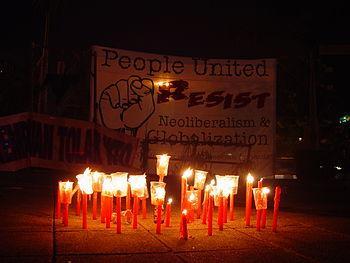
Jakarta WTO protest2 (Photo credit: Wikipedia)
To explore economic freedom and globalization, go to The Fraser Institute’s Economic Freedom of the World Report at {www.freetheworld.com}.
Critics of globalization argue that the gap between rich and poor has gotten wider and that the benefits of globalization have not been shared equally.
Visit this site to learn about companies interested in exporting their services is available at {http://www.ita.doc.gov/td/sif/exporting_services_overseas.htm}.
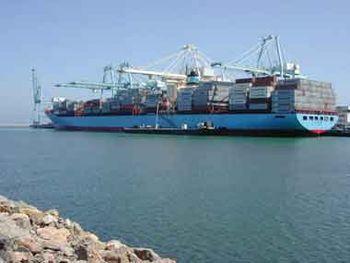
Liberalization of trade policies and globalization of supply chains have contributed to growth in the volume of freight moving through U.S. facilities, such as the port at Long Beach, CA, where this vessel is arriving. (Photo credit: Wikipedia)

